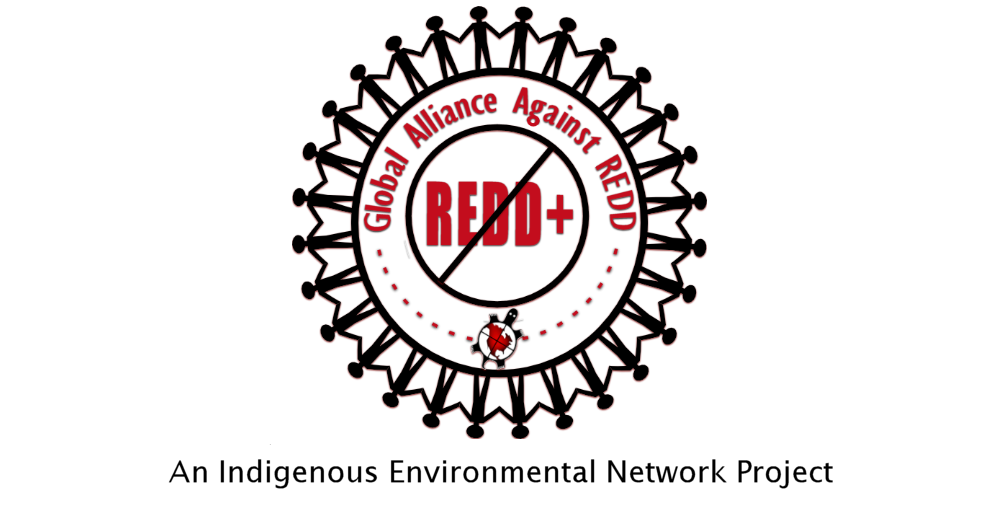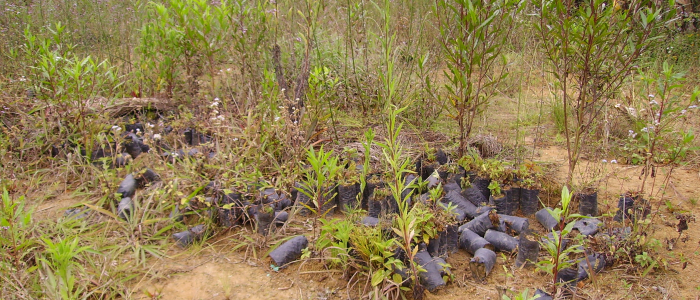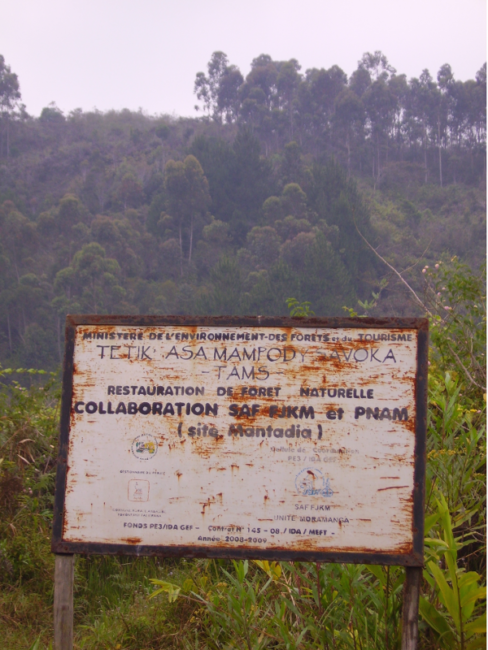Andasibe, Madagascar: A laboratory for Green Growth. That’s the title of this video on Conservation International’s Madagascar website. Through a series of iconic images of lemurs, baobabs and deforestation – most of which do not belong to Andasibe, a small area located in the country’s eastern rainforest – we learn how “carbon programs are a new source of funding for Andasibe”, and that Andasibe itself is ”an important test site” where we can see how “forest carbon can work”. This is “a success story” according to Conservation International’s video.
Although the video doesn’t mention the name, the carbon project featured here is TAMS (Tetik’Asa Mampody Savoka, or “the project to restore the fallows”). For about two decades, the forests of Andasibe witnessed the birth, growth and decay of this forest carbon project.
Once hailed as a pilot carbon project for the whole of Africa, by the time this video was made, in 2010, TAMS was at a halt and would never resume. In its wake it left unfulfilled promises of forest restoration, work and revenue. Andasibe did indeed become a test site for carbon projects, but the results have not been as widespread as its original promises.
TAMS, the other story
The story of TAMS is an interesting one because it did not start life as a carbon project. Instead it transformed into one in its search for funding.
TAMS began as a small-scale idea in the early 1990s developed by Louise Holloway, an independent environmental researcher. She devised a project that would reconnect forest fragments caused by slash-and-burn agriculture – locally known as tavy – while providing farmers with agricultural techniques that would allow for a faster regeneration of the fallows, so they could keep practicing tavy without the need for further forest encroachment.
The project didn’t managed to secure funds until it began to be posed as a potential carbon sequestration project. It was at this point, around 2002, that TAMS came to Conservation International’s (CI) attention, later bringing the World Bank’s BioCarbon Fund and the Government of Madagascar into the project.
TAMS had transformed into a Clean Development Mechanism project: it would reforest 3,000 hectares of degraded fallows and provide agricultural alternatives to participating farmers, many of whom gave land to the project in exchange for the promise of work and, some claim, the revenue from the sale of carbon credits.
Bringing carbon into play completely transformed the project that Holloway had devised, with serious consequences. As a CDM project, its main objective became the production of carbon offsets through reforestation.
This had the effect of relegating the agricultural techniques that had once been integral to the project to the background, as funds were dedicated to the costly process of reforestation and the heavy bureaucratic procedures of project preparation, carbon measurement and verification. The agricultural techniques were bundled into “Sustainable Livelihood Activities” (SLAs) but were only applied late and very timidly through some “demonstration” activities, never transforming into real alternatives for farmers. (One of these SLAs appears in the video, carried out by the village chief, or Tangalamena, on his own land).
The high-costs of producing carbon led to a profound transformation of TAMS, where only the one activity that was deemed profitable in carbon terms – reforestation – was properly carried out. Although this activity did provide employment for farmers in the area, its specific features meant that, while well paid, this source of work was highly unstable and temporary – very far from the “30 year relationship” that CI mentions in the video and which some farmers believed they were entering.
A similar thing happened with the carbon payments that farmers had been promised in exchange for giving up land for the project. Although direct payments to farmers had been on the table during the early days of TAMS as a carbon project, they were eventually ruled out when it transpired that the costs of setting up the project and producing carbon were too high to allow for payments to farmers.
As Holloway wrote in a 2005 project report, it was,
“ironic that low payments/tCO2 offered by the BioCF combined with high preparation costs (heavy bureaucracy and stringent eligibility criteria), make even the highest carbon generating activities too costly to allow the project to make direct carbon payments.”
Without carbon payments, SLAs became the main form of “compensation” to farmers, although these were never fully developed.
While largely useless to people, however, the SLAs did play an essential role in the production of offsets, because they became the “sustainable development” elements and “leakage measures” that TAMS required in order to comply as CDM project.
Carbon, imagined by Holloway as a tool to fund her project, had transformed TAMS into something else completely. Her premonitory comment in a report she wrote for CI in 2008 is highly revealing of the effects of incorporating carbon into a conservation/development project:
“TAMS is so much more than a carbon production machine…it is necessary to consider if we want to make the project fit a particular market or to harness a market to facilitate our project. … There is a danger that preoccupation with meeting the demands of the market could subsume the original goals, ultimately also threatening the viability of the carbon market aspect of TAMS.”
Epilogue
But even as carbon project, TAMS failed to survive.
The reasons for its demise are multiple and complex:
- a dizzying network of actors with internal competition to lead the project and cash in on benefits;
- unclear (and, up to a point, unclarifiable) land tenure;
- lack of a legal framework to establish carbon ownership;
- the government’s impasse in establishing a benefit-sharing agreement;
- administrative duplicities;
- complex and expensive verification practices; and
- trees that refused to grow or even grew too fast.
In 2012 the BioCarbon Fund cancelled the Emissions Reductions Purchasing Agreement (ERPA), and although CI had hoped to keep the project going, partly to justify their bigger REDD+ project in the area of which TAMS was a kind of pilot, it never did.
In Mahatsara, a little village in the area of Andasibe were I carried out fieldwork and where people worked for, and gave land to the project, TAMS became known as a scam. After years of patiently waiting, and with no signs of carbon payments coming from anywhere, people felt that they had been tricked into giving their land.
The problem was that while knowing that TAMS had ended and would not provide any benefits, people were scared to clear the land because of the contracts they had signed with the project back in 2009. By now, they have probably been turned into arable land again.
While TAMS still features today in CI Madagascar’s website, the environmental and social benefits it claims to have created are nowhere to be seen.
PHOTO Credit: Sara Peña Valderrama, an abandoned TAMS tree nursery from 2011.
In 2016, Sara Peña Valderrama completed her PhD in social anthropology, where she studied a forest carbon project run by Conservation International in Madagascar. Her thesis is available on Durham University’s website: Entangling Molecules: an ethnography of a carbon offset project in Madagascar’s eastern rainforest. She submitted this Guest Post about what happened when the project changed to a carbon project. She is currently a Honorary Research Associate at Durham University.


